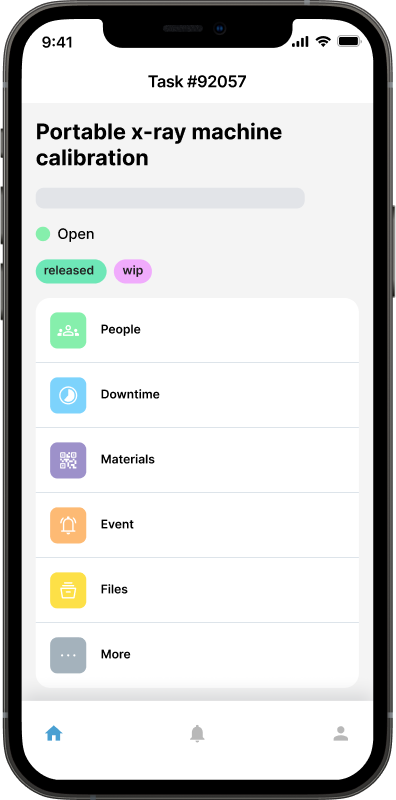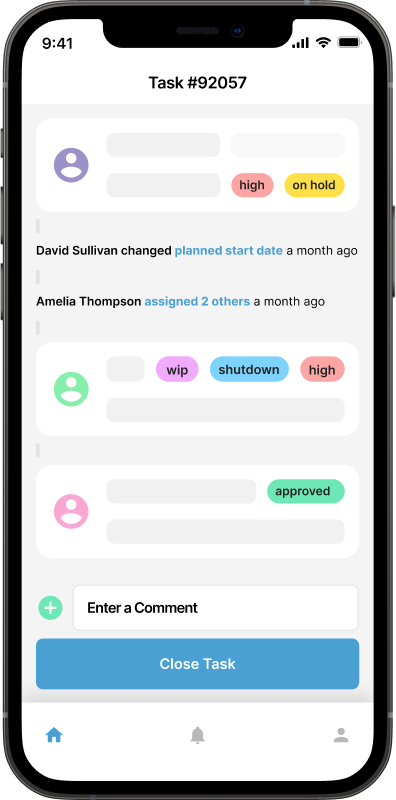Understanding Total Cost of Ownership (TCO) for SaaS Products and Its Importance in CMMS Selection

When businesses are selecting a Software as a Service (SaaS) product like a Computerized Maintenance Management System (CMMS), the primary factors they often consider are the upfront costs, subscription fees, and features. However, a comprehensive understanding of Total Cost of Ownership (TCO) is critical to making a more informed decision. TCO goes beyond the immediate price tag, encompassing all expenses involved throughout the product’s lifecycle, and is especially important in determining the long-term value of a SaaS investment. For CMMS solutions, understanding TCO ensures that businesses not only choose the best fit but also avoid unexpected costs and optimize their maintenance operations over time.
What is Total Cost of Ownership (TCO)?
Total Cost of Ownership (TCO) refers to the complete sum of direct and indirect costs involved in the purchase, implementation, operation, and maintenance of a product or service over its entire lifespan. While the initial cost (such as the subscription fee for a SaaS product) is one component, TCO takes into account:
Implementation costs: Initial setup, onboarding, and training of staff to use the software.
Operational costs: Regular subscription fees, costs for added features or premium services, and ongoing maintenance.
Integration expenses: Costs related to integrating the CMMS with existing systems like ERP or financial platforms.
Hidden costs: Things like hardware requirements, data migration, potential downtime, customization, and additional support.
Long-term support: Expenses associated with upgrading, scaling the software, or customer service support.
By evaluating the TCO, consumers can get a realistic picture of what a CMMS will actually cost over time and how it fits into their overall maintenance budget.
The Relevance of TCO to Consumers of SaaS Products
SaaS products, particularly CMMS platforms, are designed to help organizations manage maintenance activities more efficiently, track equipment history, and improve overall asset management. However, many consumers may overlook the TCO of these systems, focusing only on the immediate monthly or annual subscription fees. Yet, SaaS solutions often involve several layers of ongoing costs and operational complexities that should be factored in from the start.
Scalability and Hidden Costs
For example, as your business grows, your CMMS needs will likely expand too. Many SaaS CMMS providers charge based on the number of users, assets tracked, or the level of features needed. While a basic subscription might seem affordable, scaling the system to accommodate new facilities, more equipment, or additional users can drive up the costs. Without a full understanding of TCO, consumers could find themselves locked into an expensive product that no longer aligns with their financial expectations or needs.
Training and Integration Costs
Beyond the software's sticker price, companies must consider the costs associated with employee training and integrating the CMMS with other business systems. For example, many maintenance teams may require several weeks of training before they are fully proficient in using the CMMS, and those costs can add up in terms of time and resources. Similarly, integrating the CMMS with other tools—like procurement or financial software—might require technical expertise and result in additional fees.
Why TCO Should Matter When Selecting a CMMS

Given the various expenses that contribute to TCO, it’s clear why consumers of SaaS products, particularly in the maintenance management space, should take this metric seriously. When selecting a CMMS, focusing on TCO provides several benefits:
Long-Term Financial Planning
Understanding TCO enables businesses to forecast long-term expenses more accurately. For example, a CMMS might have low upfront costs, but if the system requires expensive upgrades or ongoing support services, these can quickly add up. TCO analysis allows decision-makers to plan more effectively, ensuring that they aren’t surprised by future costs.
Minimizing Risk
Focusing on TCO helps businesses avoid products that might appear affordable at first glance but could lead to significant operational disruptions if they require costly maintenance, fail to scale, or don’t integrate well with other systems. By considering TCO, companies can minimize the risk of selecting a CMMS that ultimately proves too costly or complicated to use effectively.
Evaluating Vendor Support
Often, the cost of customer support, upgrades, or additional features is not included in the base price of a CMMS subscription. Understanding the full TCO gives companies a clearer view of what they can expect in terms of customer service and software support, ensuring they select a provider that can meet their needs without hidden costs.
Optimizing Efficiency
A CMMS system is designed to improve maintenance workflows, asset tracking, and overall efficiency, but only when used effectively. If a company underestimates the full cost of operating the software and runs into budget constraints, they might not be able to fully implement or optimize the system. Understanding the TCO ensures that they allocate sufficient resources for the software to deliver its full value.
How to Calculate TCO for a CMMS
Calculating the TCO for a CMMS requires businesses to account for multiple factors, including:
Upfront Costs: This includes any setup fees, initial licensing, and hardware (if required).
Subscription Fees: Monthly or annual fees based on the number of users or assets.
Customization: Costs associated with tailoring the system to meet specific needs or adding features.
Training: Time and resources needed to onboard staff to the system.
Maintenance: Ongoing software maintenance, support fees, or any expenses related to upgrades or scaling.
Indirect Costs: Downtime during implementation, data migration challenges, or potential compatibility issues with existing systems.
Businesses should also consider potential savings that come from using a CMMS, such as reduced equipment downtime, more efficient use of labor, or better asset longevity. These benefits, when weighed against the TCO, can help justify the investment.
TCO is Key to CMMS Selection
When selecting a CMMS, it’s tempting to focus solely on immediate costs or eye-catching features. However, taking the time to evaluate the Total Cost of Ownership ensures that businesses choose a system that aligns with their long-term financial and operational goals. By considering factors such as implementation, training, scalability, and hidden costs, companies can avoid surprises and ensure that their CMMS delivers real value over time.
In conclusion, a CMMS is not a one-time purchase; it is a long-term investment that impacts how efficiently a company manages its assets and maintenance tasks. By understanding the full scope of TCO, companies can make better decisions, reduce risks, and ultimately, choose a CMMS that supports their maintenance goals in the most cost-effective manner.

